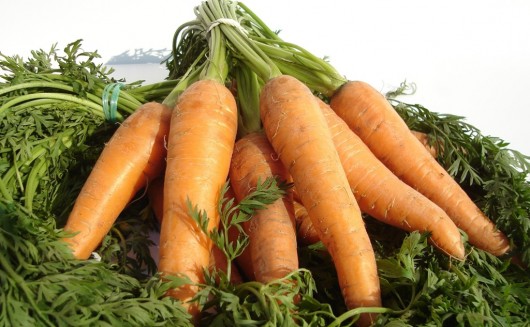Which Fruit Has The Most Vitamin A?
What Is Vitamin A?
Vitamin A is a fat-soluble vitamin that is part of the retinoid family. It is found in many foods including fruit, eggs, vegetables, milk, meat and butter. Vitamin A can also be produced in a laboratory. It is required for proper functioning and developing of our eyes, skin and immune system.
Why Is Vitamin A Good For Our Health?
Vitamin A plays an important part in our health in many ways. It acts as an antioxidant and boosts immunity, protects against infection, and plays a role in the functions of vision, gene transcription, embryonic development, bone metabolism and skin/cellular health. Vitamin A is essential for the eyes for low light and color vision. It is also used as a very successful treatment of skin conditions.
Not enough vitamin A can cause serious health problems. Unfortunately this is common in developing countries. One of the first signs of vitamin A deficiency is night blindness. Because vitamin A aids in immunity and fights infection, many children without proper immunizations die from measles and other infectious disease.
On the flip side, having too much vitamin A can cause health problems as well. Excessive intake of vitamin A can increase the risk of fracture. People can actually overdose on vitamin A, causing toxicity. Because this vitamin is stored in the body, taking too much over a period of time can build up over months and years. Symptoms of vitamin A toxicity include blurred vision, bone pain, headaches, muscular weakness and diarrhea. Too much vitamin A in pregnant women has also been shown to cause birth defects.
Vitamin A is an essential nutrient used by our bodies to make it run properly. It’s important to follow the recommended dosing guidelines to insure that you are taking the right amount for optimal physical and mental performance.
Top Fruits For Vitamin A Content
The amounts of Vitamin A are given for 100g of each fruit.
About IU
In pharmacology IU stands for the International Unit and is a measurement for the amount of a substance, based on biological activity or effect. Among other things it is also used to quantify vitamins. Since vitamins exist in different forms (e.g. vitamin A in the form of retinol or beta-carotene) you can use IU to compare these forms among themselves. The same IU number means that the substance has the same biological effect.
But! There is no equivalence between IU measurements of different biological agents. For instance, one IU of vitamin E cannot be equated with one IU of vitamin A in any way, including mass or efficacy.
1 Carrot 13790 IU
2 Pumpkin 7385 IU
3 Melon (Cantaloupe) 3382 IU
4 Apricot 1926 IU
5 Tomato 1496 IU
6 Grapefruit 1150 IU
7 Papaya 1094 IU
8 Grape 1000 IU
9 Mango 765 IU
10 Passion Fruit 717 IU
11 Tangerine 681 IU
12 Guava 624 IU
13 Elderberry 600 IU
14 Watermelon 569 IU
15 Plum 345 IU
16 Peach 326 IU
17 Jackfruit 297 IU
18 Gooseberry 290 IU
19 Blackcurrant 258 IU
20 Orange 225 IU
21 Blackberry 214 IU
22 Fig 142 IU
23 Cucumber 105 IU
24 Kiwi 87 IU
25 Banana 64 IU
26 Cherry (sweet) 64 IU
27 Cranberry 60 IU
28 Pineapple 58 IU
29 Blueberry 54 IU
30 Apple 54 IU
31 Lime 50 IU
32 Durian 44 IU
33 Redcurrant 42 IU
34 Mangosteen 35 IU
35 Raspberry 33 IU
36 Mulberry 25 IU
37 Lemon 22 IU
38 Strawberry 12 IU
